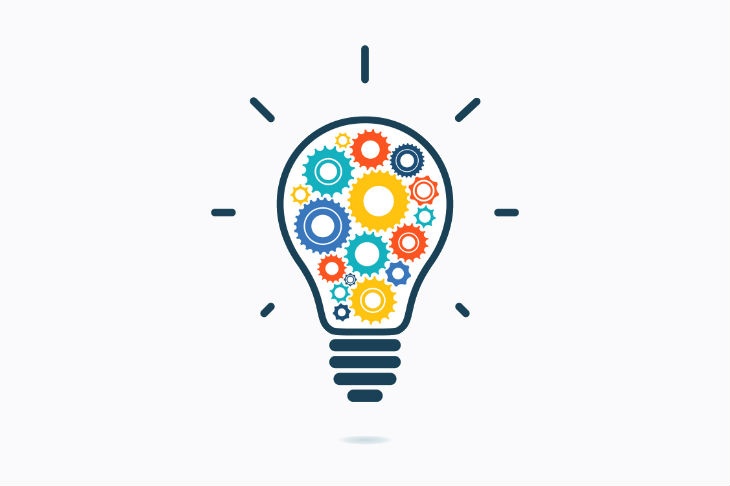
Get weekly
HubSpot updates
If you’ve read our guide to inbound marketing, you’ll have realised that there’s no getting away from the fact that content forms a huge part of your inbound marketing strategy.
It can be hard to come up with the ideas of what to write about, to know whether people are actually interested in or whether they’re searching for your product. Then, when you get a topic idea, it’s really easy to experience writer’s block and sit staring at your computer thinking, “I know I need to write something, but I don’t know what.’
So, to help you with your content creation process, I’m going to share with you the exact process that we use to come up with content that people are looking for.
It all starts with your customer
This is going to sound harsh, but people don’t care about you or your business. They don’t want to know about your latest award, how many staff you have, who won the internal ping-pong championship or what your dog ate for dinner last night. They want to consume content that will help them solve an issue or problem that they have, or help them to make a decision about a product or service that they are thinking of buying.
It’s therefore really important that you first understand your buyer persona and, secondly, you understand the buyer’s journey.
What is a buyer persona?
A buyer persona is a semi-fictional representation of your ideal customer and ALL of your marketing should be speaking to the personas that you want to attract to your business.
It’s likely that you will have multiple personas for your business. Each will have different needs and will want different types of content, but it’s also likely that you will have a primary persona that you should start focusing on first. For more information about buyer personas, read this blog - Buyer persona’s: what are they and why you need them.
Download a Free Buyer Persona Template
What is the buyer’s journey?
The buyer’s journey is the thought process that people go through leading up to their purchase. It doesn’t matter how large or small the purchase, everyone goes through it.
It has three stages:
Awareness - I’m experiencing symptoms of a problem or opportunity.
Consideration - I’ve defined what my problem or opportunity is and I’m looking for solutions.
Decision - I’ve identified a number of solutions and and I’m trying to decide which is best for me.
For more information about the buyer’s journey, visit our blog, The buyer’s journey explained
Hopefully you’ll see that different persona’s at different stages of the buyer’s journey will require different types of information. For example:
A sales director who is trying to work out why his sales staff are not closing as many leads as they should be will be searching for different information than a sales director who has recognised he needs a CRM system and is looking to find the difference between the various solutions on the market.
Likewise, a financial controller who is evaluating the costs of a CRM is probably more likely to be wanting more information about costings and potential ROI that the solution provides.
Once you’ve documented your buyer personas, pick one that you’re going to target first. Then, think about the thought process and the questions that they have when at at each of the three stages. For example, let’s imagine you’re an accountant and one of your personas that you are targeting is an entrepreneur looking to start their first business.
Our aim is to come up with ideas for a downloadable piece of content that would be valuable enough for the entrepreneur to leave you his details in exchange for that content. Then, we want to drive traffic to that content offer by using blogs
So, we need to think about the different stages of the buyer’s journey the persona would be running through.
Awareness stage:
The thought-train at this stage may be, “I want to start my own business but don’t know where to start.”
The content offer could be something along the lines of - “Your Step-by-step Guide to Starting your First Business”.
Then, we imagine, if we were producing that piece of content as a book, what would the chapters be? It could be something along the lines of:
- Introduction
- Why start your own business?
- The pros/cons of starting your own business
- Different types of business structure
- Recruiting staff
- Raising the required finance
- Where to go for help
You could either write these chapters yourself, get a copywriter to write them, or even record them in a video.
Take a look at each chapter and think about what blogs you could write that would be related. At the end of those blogs you can then offer them the download.
Let’s take a look at the ‘Raising the required finance’ chapter. You could have blogs such as:
- How to raise the finance needed to obtain a business loan
- The different types of finance explained
- 7 ways to raise enough money to start your own business
- What will make the banks say yes to your business loan?
- How to plan the finances for your business
And so on.
You would then repeat the process for consideration and decision stages. For example, at the consideration stage, you could offer a cash flow planning template as your downloadable offer and drive traffic to it with blogs such as:
- Why it’s important to know where your money’s going
- How to complete a cash flow forecast for your bank
- 9 mistakes startups make with their cash flow planning
At the decision stage, your offer is likely to be a more direct, get in contact type offer. Perhaps a free consultation or a free half hour clinic.
Your blogs are going to be more sales focused, for example:
- Why you need an accountant when starting your business
- How an accountant can help you raise the finance you need
- Questions that you need to ask before choosing an accountant
With just one particular strand of one persona’s buyer’s journey, we’ve come up with three content offers and 11 blog ideas. You can repeat this process for each of the chapters in the eBook. Once you’ve done that, what’s the next strand in their buyer’s journey? For example, you could repeat the process for the challenge of recruiting good staff, with the end goal of getting them to use your service for payroll and PAYE compliance.
Once you’ve got your content ideas mapped out, it’s important to conduct keyword research to ensure that people are actually searching for these topics. We’ve written a number of blogs on the subject of keyword research, so rather than repeat the information, perform a Google search using the terms Klood Keyword Research.
As you can see, when planning your content, there needs to be a strategy rather than random ideas. To help you with planning your overall strategy we’ve put together an eBook: ‘6 Keys to Planning your Inbound Marketing Strategy’, which you can download for free below:

